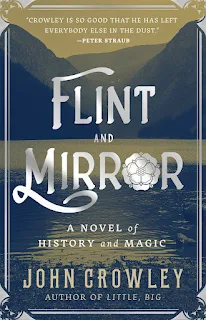And then again, some facts in historical mystery are simply a matter of grinding it out. For instance, when you need a car to get your heroes from Luxor to Cairo as quickly as possible. The train simply won't do. This happens in The Strange Case of the Pharaoh's Heart.
First of all, you should realize that without the car, Tutankhamun might never have been discovered. Lord Carnarvon, the sponsor of the dig, was mad for cars early on. The faster the better.
And in 1903, he had the dubious distinction of being in the world's first car crash.
 |
| Lord Carnrvon |
But back to my problem. Where to get a car? Our heroes came to Luxor aboard a dahabeah (another whole story). Well, it's true, I could make up any car owned by anybody. I wouldn't even have to name the kind of car. But historical fiction is made up of these thousand details which anchor our stories in reality, and create a bond of trust between writer and reader.
So I decided to make the car Lord Carnarvon's car, left garaged in a tomb (which is where they did keep them) when he went to Cairo and died. So what kind of car would Lord Carnarvon have driven?
This was actually easy to uncover, since Carnarvon was so well known for his love of cars (and horses and yachts). Of course, I could have gone with a Ford, since he had provided one for the dig, but I, wanted a fast car. Before the end of his life, Carnarvon was into Bugattis (although he had just purchased a Bentley, which he never got the chance to take home.)
Bugatti. That's just brimming with sexy. (Although to tell you the truth, I know zero about cars and couldn't tell a Bugatti from a VW Bug.) A Bugatti would do.
But now I needed a Bugatti made before 1923, when Carnarvon died,
And I needed a four-seater, which could carry five in a pinch.
And fast. Faster than a train, which I already knew made the trip from Luxor to Cairo in about ten hours.
Which is about how long it took me to find my Bugatti. (And I get down on my knees and praise the internet every day.) I looked at a lot of Bugattis. Most were two-seaters. Some, for racing purposes held only one. I found a few that might be four-seaters, but I couldn't be sure from the pictures. And while the specs told me what horsepower they were and how many cylinders they had, not a single one mentioned the number of seats.

Sold. That is, if I could just find out--yes! Top speed 62mph. And since my driver is a professional racer, I'm going to posit that she can make it to Cairo in under seven hours.
 Now I just have to decide whether it gets them all the way there or breaks down in the desert. Which would mean I'd have to get under the hood of the thing.
Now I just have to decide whether it gets them all the way there or breaks down in the desert. Which would mean I'd have to get under the hood of the thing. 




